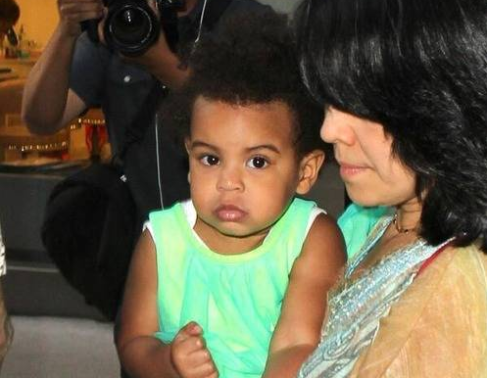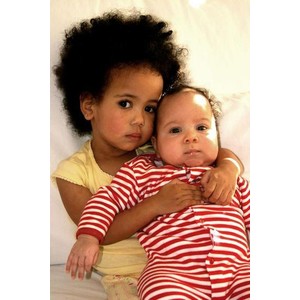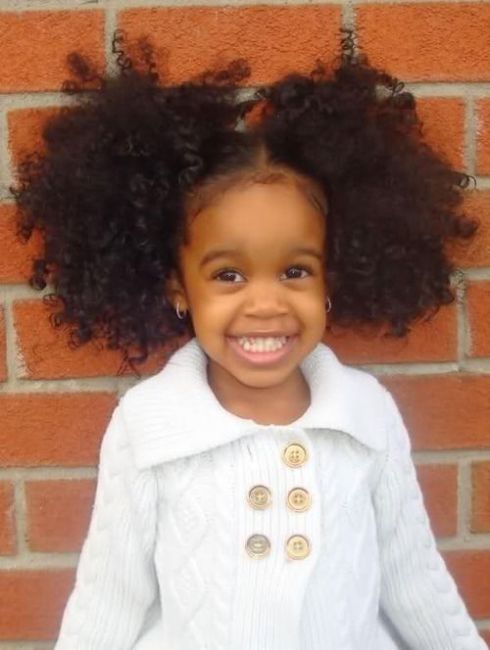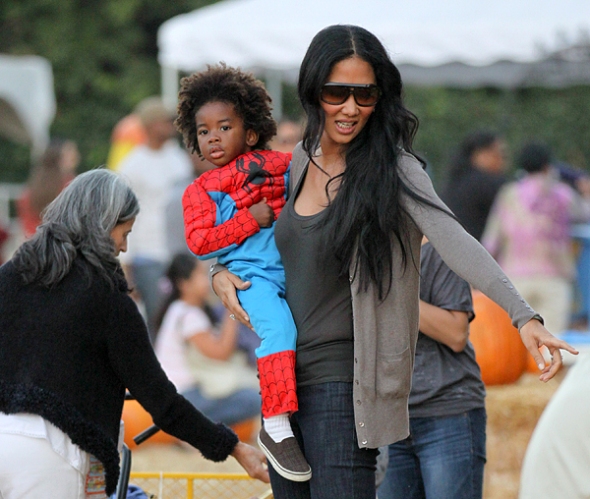Many of us have bad memories of our hair being combed as a child. Due to a lack of knowledge and patience, we endured the pain of having a comb forced through our tightly coiled, kinky or curly hair. For some of us, our natural hair was nothing but a source of pain and annoyance. Meanwhile our straight-haired friends could run a fine tooth comb or brush through their hair with ease. Not to mention being bombarded with images of silky, flowing hair via the media. We must change our mindset about our natural hair, it is a negative mindset that has developed for generations. There is nothing wrong with Afro textured hair. The ability to run a comb through it, from root to tip, is not a measurement of beauty and quality. Neither is it inferior to straight silky hair. It simply differs from straight hair and requires a different technique for care and maintenance. Part one covered moisturizing your child’s hair and the type of products to use, check it out. Here are six more strategies for managing your child’s hair. Hopefully, we can pass on good hair care practice to the next generation.
Comb with care
The quality of combs and brushes should be of the highest quality before using them for our small children. Large, wide tooth, seamless combs should be used as opposed to cheaply made plastic combs. The combs with longer teeth cause less damaged when detangling kinky or curly hair. Use soft bristle brushes only, for gently smoothing the hairline. Using brushes to detangle the length of the hair will likely lead to breakage. Brushes with harder bristles can work well for young boys with short hair. Mist the hair with water first, add oil or butter to soften the hair before brushing. Brush along the grain of the hair, not against it.
Most importantly, hair should be combed after it is sprayed with water or a water based conditioning serum. Never comb the hair when it is dry and unpliable, this leads to nothing but pain and breakage. Instead, comb tangled hair from the tips, a quarter of an inch or so at a time. Release any tangles gently and work your way down to the root. The more patient and gentle you are with their hair, the more it will flourish.
Finger detangling is another option, combs can be avoided entirely. This is generally recommended for textured hair, especially for kinky, tightly coiled hair. Combs may not always be necessary and can cause breakage. Finger detangling is gentler and easier for textured hair. Spray with water, add some oil or butter and gently finger detangle and smooth edges with your hands. Accessories like ribbons and bows can be added after.
Braid gently with minimal tension
Braids should never be too tight. Style longevity should not be put before the long-term health of the child’s hair. What does it matter if the style lasts a week longer, when the hair breaks and thins dramatically once the style is taken out? Furthermore hair that is braided too tightly causes headaches as well as damaged hair. This will make it harder for them to concentrate at school and even disrupt sleep. Always keep braids around the frontal hairline relatively loose so that no tension is placed on the hair as the child plays, sleeps, or makes facial expressions. Braiding tightly can cause permanent damage to the child’s hair follicles and prevent them from growing healthy hair in their adult years.
Mist braids and cornrows with sprays daily and seal with oil for shine. This will prevent them from drying out. With extensions, it is important to remember that synthetic hair is stronger and heavier than our hair. When intertwined with delicate children’s hair it can abrade the cuticle and lead to terrible breakage. Children under the age of seven should always have their own hair braided without extensions.
Establish a night care routine
Ideally a satin scarf at night is best. Getting them into the habit of using one is advisable. The next best thing is a satin pillowcase to minimize frizz and preserve their style. If the scarf keeps falling off , a satin bonnet may also work well. These methods will prevent excessive rubbing that can lead to nape and side hair breakage. It is also important to remove all accessories such as clips and hair bands as these can snag the hair as the child sleeps. Release the hair from ponytails at night to prevent ‘halo breakage’. This is when children develop breakage around the rim of their hairline and nape or when they have short hairs around their head that do not fit into ponytail holders. In the morning, to smooth their edges and eliminate frizz, lightly spray their edges and braids with water. Then firmly apply a satin scarf to flatten the stray hairs. Leave it on for five minutes or so and their edges should be smoother and neat once it is taken off.
Be gentle with ponytails and buns
Babies and young girls with very short hair should not have their hair forced into ponytails and hard barrettes. Their hair can be beautifully accentuated with satin headbands, ribbons and clip-on bows. When short hair is manipulated into a ponytail, the tension placed on both the scalp and hair can damage both the hair follicles and strands. This leads to thinning edges and missing nape areas. The hair underneath the ponytail holder should have freedom to move. Perform a tension test by asking the child to move her head from ear to shoulder on each side and chin to chest. If there is any discomfort, loosen the ponytail. Limit ponytails to five or six, as smaller ponytails are more likely to lead to breakage. Avoid rubber bands and ponytail holders with the metal crimp in the middle as these can snag the hair.
Use kinder shampoos and conditioners
All natural, sulfate-free shampoos are best because they are gentle for the hair and scalp. If you must use shampoos with detergents, adding a couple of tablespoons of olive oil or almond oil will reduce the harshness of the shampoo. Stronger shampoos can be used for clarifying every two to three weeks if your child is particularly active and needs deeper cleansing. Clarifying will reduce product buildup or dirt.
Deep conditioning with heat caps isn’t considered necessary for children, as their hair should be at its healthiest. The exception is hair that is chemically treated, in which case a protein conditioner may be necessary every other week. This will help to maintain the protein moisture balance that chemicals tend to disrupt.
Lead by example
If your child sees that you love your hair in its natural state, they will learn to do the same. Many of us grew up believing that God made a mistake with our hair and that it needed to be fixed. We used a European standard of beauty to measure the worth and beauty of African hair. These misconceptions are slowly changing. How you teach your children to love the hair that God has given them is your decision. However resorting to chemical relaxers to permanently alter the texture of a child’s hair is unnecessary. Perhaps it should be left to your child to decide, when they are old enough to deal with the consequences and maintenance that is required for chemically treated hair.
How do you manage your child’s hair? Please share your tips below.









